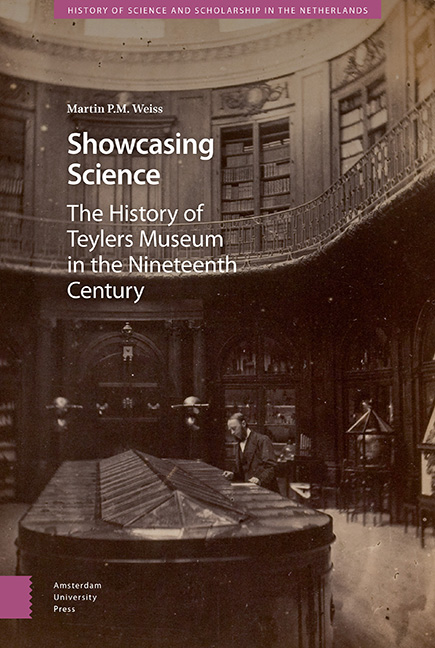Book contents
- Frontmatter
- Contents
- List of Illustrations
- 1 Introduction
- 2 The Birth of a Musaeum
- 3 Van Marum – Empiricism and Empire
- 4 Van der Willigen – Precision and the Discipline of Physics
- 5 Lorentz – Function Follows Form and Theory Leads to Experiment
- 6 Conclusion
- Appendix
- Acknowledgements
- Archives
- Bibliography
- Index
5 - Lorentz – Function Follows Form and Theory Leads to Experiment
Published online by Cambridge University Press: 21 November 2020
- Frontmatter
- Contents
- List of Illustrations
- 1 Introduction
- 2 The Birth of a Musaeum
- 3 Van Marum – Empiricism and Empire
- 4 Van der Willigen – Precision and the Discipline of Physics
- 5 Lorentz – Function Follows Form and Theory Leads to Experiment
- 6 Conclusion
- Appendix
- Acknowledgements
- Archives
- Bibliography
- Index
Summary
I Themes of the Chapter
By the mid-1920s, the Teyler Foundation had hit dire straits financially. At a meeting in May 1926, one of the trustees graphically summarised that money was “tighter than tight” and the Foundation's current situation “unsustainable”. This was not an exaggeration. In fact the situation was so serious that, at this particular meeting, the trustees began debating what should be liquidated first, should the worst come to the worst: the Foundation's collection of paintings or its scientific laboratory. As events unfolded, the trustees were not forced to make any such stark choices. For the next few decades, selling off all duplicate drawings and prints from the Foundation's collections and economising by cancelling various annual contributions to other institutions proved sufficient to keep the Foundation and all the institutions it financed – i.e. its almshouse, the Learned Societies, and Teylers Museum – operating. Nevertheless, the fact that such scenarios were debated in the first place of course struck at the heart of the Foundation's identity.
The fact that the Foundation found itself in financial difficulties is all the more striking because this would have been virtually unimaginable just a few years earlier. On the eve of World War I, to an outsider at least the Foundation's resources would have seemed almost limitless. Over the preceding decades, three events in particular would have helped bolster the impression that the Foundation's trustees were a safe pair of hands where money was concerned: in 1885, the hitherto largest and lavishly decorated extension to the Museum had been inaugurated; then, just eight years later and as if to prove that their resources had not been stretched to the limit, the trustees added another glamorous-looking annex to the Museum – the so-called Second Art Gallery; finally, in 1912, the Foundation appointed the Nobel Prize laureate Hendrik Antoon Lorentz as curator of the Foundation's laboratory and instrument collection – a clear sign that Teylers Museum was still held in high regard in scientific circles. Yet it was during the negotiations on Lorentz’ contract that the first augurs of what was to come might already have been discernible: one trustee, Louis Paul Zocher, opposed the Nobel Prize winner's appointment.
- Type
- Chapter
- Information
- Showcasing ScienceA History of Teylers Museum in the Nineteenth Century, pp. 273 - 332Publisher: Amsterdam University PressPrint publication year: 2019



